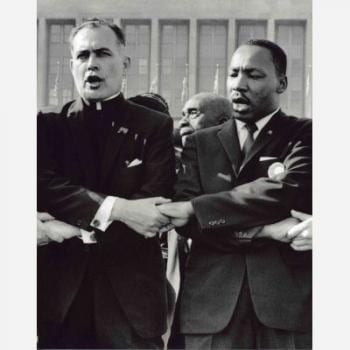 If you haven’t read Jeremy Beer’s The Philanthropic Revolution: An Alternative History of American Charity, well then tant pis pour toi, as the French used to say. It’s an eloquent historical essay on how we got from a theologically-grounded and localized culture of charity to the technologically-driven, globalist system of institutionalized do-goodery today. From the jacket blurb: “[Beer] exposes the way modern philanthropy’s roots are entangled with fear and loathing of the poor, anti-Catholic prejudice, militarism, messianic dreams, and the ideology of progress.” OK, that should get you going.
If you haven’t read Jeremy Beer’s The Philanthropic Revolution: An Alternative History of American Charity, well then tant pis pour toi, as the French used to say. It’s an eloquent historical essay on how we got from a theologically-grounded and localized culture of charity to the technologically-driven, globalist system of institutionalized do-goodery today. From the jacket blurb: “[Beer] exposes the way modern philanthropy’s roots are entangled with fear and loathing of the poor, anti-Catholic prejudice, militarism, messianic dreams, and the ideology of progress.” OK, that should get you going.
If the book had included case studies, I have one to offer: my decade-plus experience in fund-raising for a venerable Catholic after-school program in Chicago. More than a volunteer, I had a small sales job calling up corporations and soliciting paid advertising for the annual fund-raiser dinner, attended by quite a few of Chicago’s corporate glitterati. The ads are printed in the gala evening’s program book, as they’re called, and they go for anywhere from $1,000 to perhaps $6,000, depending on size and position in the book.
The key in this kind of campaign is the list, of course. The Chicago non-profit was a major recipient of funds from Walgreens whose CEO decided that the Chicago-area corporation should support this kind of worthy local endeavor. Landing Walgreens as a major donor was huge in several ways. Especially because the CEO (who always spoke thereafter at the annual dinner) instructed his staff to send over a copy of the company’s current corporate partner list, from which I had the contact info for my telephone campaigns. I simply called up some marketing person at the partner company, explained that were working with the Big W, and how bout contributing to one of their favorite charities?
For a stretch of years–probably through about 2008, of course–I was able to generate well over $100,000 annually by contacting dozens of small- to mid-size, mostly Midwestern companies who sold a wide variety of items through Walgreens. Some guy in Skokie with a million-dollar plant making all kinds of tchotchke dolls or maybe a small manufacturer of lip balm with an offbeat flavor. Several marketing companies who served as reps for numerous small candy companies.
Some donated simply because of their dependence on their much bigger distributor but quite a few seemed to have a feeling for Walgreens based on quite a few years of interactions with the Deerfield IL-based century-old company.
Gradually, however, my contacts changed in nature. First, several of them would report that they were no longer working with Walgreens: the purchasing system had simply gotten too onerous, their margins were increasingly squeezed thinner, the store was starting to buy like Wal-Mart! So the smaller guys began falling away.
Meanwhile, something was happening to the middle-sized brands also. The regional marketing person was gone and now I was calling someone in national headquarters who was handling multiple drugstore distribution channels, yada yada. They had never heard of Walgreen’s favorite after-school program of many years. And Walgreens changed CEOs a few times over this period.
A couple of years ago, as an experiment, I strolled through the aisles of a local Walgreens, trying to figure out how many different brands I was looking at. Seemingly hundreds, thousands. Except that I wasn’t. Everywhere I looked, I was looking at Johnson & Johnson, P&G, Unilever, Nestle, Mars, Coca-Cola, Kraft, Pepsico, and Kellog–and not many more.
I’d guess consolidation of vendors and globalization changed Walgreens corporate’s view of data sharing. About five years ago, the corporate communications people informed us that under a new policy, they could no longer send us an updated vendor list. So I perforce continued calling the old list, year after year, noting that more and more individuals were no longer in their positions or that the company was no longer even in operation. The list finally went pretty much dead.
This year’s fund-raiser, which now depends on a few large corporate donors, raised almost $1 million in a single evening. (One recent honoree–the winner of a form of philanthropic medal-giving aimed at boosting donations was the CEO of Chicago largest private equity firm, someone likely to know a couple of things about consolidation and globalization, presumably.)
But the dinner program book–lacking a viable prospect list from which to sell and prospects with neither much loyalty to Walgreens nor any awareness of our after-school program–raised a grand total (and an all-time low) of about $4,000, possibly a kind of barometer of the big W’s vendor relations.
In his fine book Jeremy Beer coined the term “philanthrolocalism” to suggest what has been lost here. That is, “in contrast to the impersonal, utilitarian ethic of effective altruism,…we have a primary responsibility to look after that which is closest to us.”
We also have a need to recognize the ways in which our consumer economy has collapsed into a kind of consolidation that would have given Teddy Roosevelt hives. If you’ll allow me to put it this way, it’s going to take strong medicine to fix this.
Photo credit: Ruth and Dave via Foter.com / CC BY












